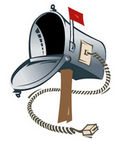1912
Events
- The RMS Titanic sank. While in distress, it contacted several other ships via wireless. After this, wireless telegraphy using spark-gap transmitters quickly became universal on large ships. The Radio Act of 1912 required all seafaring vessels to maintain 24-hour radio watch and keep in contact with nearby ships and coastal radio stations.
- U. S. vessels in the Atlantic and Gulf of Mexico are assigned calls beginning with K, and those in the Pacific are assigned calls beginning with W.
- Experimental station at the University of Minnesota attempts to air football games using a spark transmitter and regular telegraph signals.
- 9YV (WTG) an experimental station operated by Kansas State University in Manhattan, Kansas becomes the first radio station in the U.S. to offer a regularly-scheduled daily broadcast (in morse code) of the weather forecast daily at 9 am.
-
Radio signal amplifier devised-Columbia University electrical engineering student Edwin Howard Armstrong devises a regenerative circuit for the triode that amplifies radio signals. By pushing the current to the highest level of amplification, he also discovers the key to continuous-wave transmission, which becomes the basis for amplitude modulation (AM) radio. In a long patent suit with Lee De Forest, whose three-element Audion was the basis for Armstrong’s work, the courts eventually decide in favor of De Forest, but the scientific community credits Armstrong as the inventor of the regenerative circuit.
- John H. Hammond, Jr. develops equipment to remotely control vessels by radio up to three miles away. Later, many of his patents were sold to the U.S. military for use in radio guidance in weapons delivery systems.
On This Day
- August 13-The United States Congress passes the 1912 Radio Act.The Radio Act of 1912 (37 Stat. 302) is a United States federal law that mandated that all radio stations in the United States be licensed by the federal government, as well as mandating that seagoing vessels continuously monitor distress frequencies. The original bill was initiated during the investigations following the sinking of the Titanic. The act set a precedent for international and federal legislation of wireless communications. It was followed by the Radio Act of 1927.
Enforcement and penalties
Implementing and enforcing the Act was the responsibility of the United States Secretary of Commerce and Labor. The U.S. Department of Commerce and Labor was empowered to impose fines of not more than $500 and to revoke the licenses of those radio operators who violated the restrictions laid down by the Act. Furthermore, the government could seize the equipment of the offending station, as well as suspending the radio license of the operator for one year.
From Wikipedia
- August 13-First experimental license issued by Dept. of Commerce following Int. Radio Convention and Radio Act of 1912, to St. Joseph’s College, Philadelphia.
Radio Stations Established in 1912
- Wireless Hill
Headed by meteorologist George Ainsworth, the radio station was established as part of the 1911-1914 Australasian Antarctic Expedition led by Douglas Mawson in order to provide a radio link between the expedition’s main Antarctic base at Cape Denison, Commonwealth Bay, and Hobart, Tasmania. It comprised a radio shack, an engine room and transmission masts erected at the top of the hill. The equipment used was German-made Telefunken 1.5 kW spark transmitters, with power for radio transmission coming from a De Dion-Bouton engine.
The expedition telegraphists on Macquarie Island, Arthur Sawyer and Charles Sandell, used morse code operated on high frequency. The first transmission of the station was made to another receiver on the island on 17 January 1912. The first communication between the island and the outside world took place on 13 February 1912, with Sydney radio and with shipping. The station subsequently sent daily weather reports to Wellington, New Zealand. Communication with Commonwealth Bay was finally established in April 1913. In 1913 control of the station was handed over to the Australian Meteorological Service, which continued to operate it until 1915 when meteorological observations were discontinued. The site and the equipment were then abandoned until 1948 when the Australian National Antarctic Research Expeditions established a permanent presence on the island.
Radio in 1912
- Listen to the Top 40 Songs of 1912
Note: You will be redirected to a different web site, which will open in a new window.



